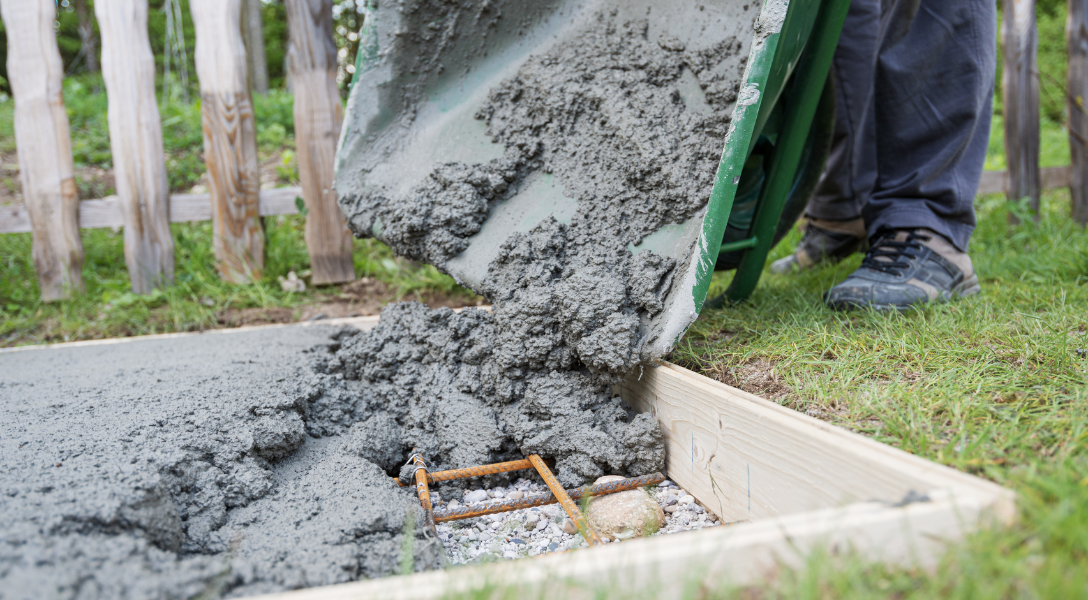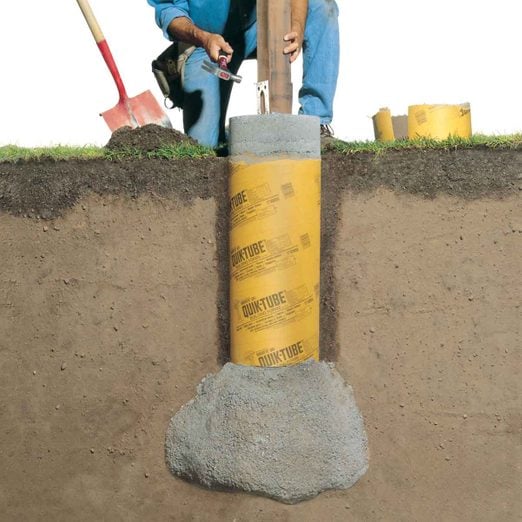A Strong Foundation for Your Oasis: Discovering the Significance of Deck Footings in Outdoor Frameworks
A Strong Foundation for Your Oasis: Discovering the Significance of Deck Footings in Outdoor Frameworks
Blog Article
Picking the Right Deck Footings for Stability and Sturdiness
When it pertains to constructing a deck, one of one of the most important choices you will make is selecting the right footings for security and toughness. The longevity and safety and security of your deck depend greatly on the sort of grounds you choose, as they give the necessary support and stability to withstand the examination of time. With a myriad of choices offered, it can be overwhelming to determine which grounds are best suited for your details requirements. In this conversation, we will certainly check out the various sorts of deck footings, take into consideration the crucial elements to weigh when deciding, and delve right into the pros and cons of different options. By the end, you will certainly have a clearer understanding of the selections available and be much better geared up to make an educated decision for your deck job.
Sorts Of Deck Grounds
These footings consist of a cylindrical hole filled with concrete, which supplies a solid structure for the deck blog posts. Concrete pier grounds are reasonably very easy to mount and use excellent stability, making them a popular choice for many deck projects.
Another sort of footing is the helical pile footing. Helical heaps are steel shafts with helical plates connected to them. These grounds are mounted by screwing them right into the ground, which produces a safe structure for the deck. Helical stack footings are suitable for locations with difficult soil conditions, as they can be set up in virtually any kind of kind of soil. They also permit very easy change and leveling of the deck if needed.
Conversely, some building contractors choose precast concrete footings. These grounds are constructed from resilient concrete and can be found in different sizes and shapes to accommodate various deck layouts. Precast concrete grounds are practical to install and supply a steady base for the deck framework.
Lastly, one more alternative is the post-in-anchor footing system. This kind of ground involves driving a steel anchor right into the ground and attaching it to the deck message. It offers adaptability in terms of placing the deck messages and appropriates for decks with light-weight structures.
When picking the best kind of deck footing, it is vital to take into consideration elements such as soil problems, deck tons, and neighborhood structure codes (Deck Footings). Consulting with a professional contractor or architectural engineer can aid make certain the ideal footing is selected for a secure and safe deck
Aspects to Consider When Selecting Grounds
When selecting the ideal footings for a deck, it is crucial to very carefully take into consideration various aspects such as soil conditions, deck tons, and adherence to neighborhood building regulations. These factors play a considerable role in ensuring the security and durability of the deck structure.
The kind of dirt on which the deck will be built figures out the kind of grounds needed. On the other hand, decks built on clay or large dirts might call for footings that can accommodate the dirt's propensity to increase and agreement.
One more essential element is the deck load. The weight of the deck, consisting of the materials utilized and any type of potential real-time tons such as furniture or celebrations, have to be thought about when choosing footings. The grounds need to be developed to bear the weight of the deck and disperse it uniformly to avoid any architectural problems or failings.
Lastly, adherence to neighborhood structure codes is vital. Building ordinance vary from region to area, and it is vital to adhere to the details demands set by the neighborhood authorities. Deck Footings. These codes make sure that the deck is built securely and meets the essential standards for architectural integrity and load-bearing ability
Concrete Footings: Pros and Disadvantages

Concrete footings offer a number of benefits and downsides when made use of as the structure for a deck. On the positive side, concrete footings supply exceptional security and longevity.
Another benefit of concrete footings is their adaptability. They can be put right into various sizes and shapes to fit different deck styles and setups. Concrete footings can be personalized to fit the particular demands and needs of the deck framework.
Nevertheless, there are likewise some drawbacks to utilizing concrete grounds. One major drawback is the cost and labor involved in their installation. Concrete grounds call for excavation and typically need the assistance of hefty equipment. This can enhance the total expense of the deck job and may call for specialist help.

Helical Piers Vs. Sonotubes: Which Is Much better?
In taking into consideration the foundation alternatives for a deck, the comparison between helical piers and sonotubes is essential in figuring out the premium selection. Helical piers, additionally referred to as screw piles, are steel shafts with helical plates affixed to them. They are turned right into look here the ground making use of hydraulic equipment, providing a stable and durable foundation for the deck. On the various other hand, sonotubes are round types constructed from cardboard or fiber product that are full of concrete. They are put in an opening dug into the ground and offer assistance for the deck.
When it pertains to stability and sturdiness, helical piers have the upper hand. The helical plates on the piers create a solid grasp with the soil, changing or avoiding any movement of the deck. This is specifically helpful in areas with unpredictable or changing soil problems. Sonotubes, on the various other hand, depend entirely on the concrete loading for stability, which may not use the exact same degree of stamina and resistance.
In terms of installment, helical piers are fairly easier and faster to set up contrasted to sonotubes. The hydraulic machinery made use of to twist the piers right into the ground ensures a efficient and quick procedure. Sonotubes, on the various other hand, need excavating holes and pouring concrete, which can be labor-intensive and time-consuming.
Furthermore, helical piers are a more functional option. They can be utilized in numerous dirt conditions and can be changed or reinforced if needed. Sonotubes, on the various other hand, might require additional support, such as rebar, in specific dirt conditions or areas with high tons needs.
Selecting the Right Footings for Your Deck's Dimensions
For ideal structural stability, it is necessary to very carefully choose the ideal grounds that align with the measurements of your deck. The measurements of your deck, including its height, length, and width, play a considerable function in figuring out the kind and size of footings required.
When selecting footings for your deck, it is necessary to think about the load-bearing capability of the dirt. The weight of the deck, combined with the weight of any furniture or people on it, applies a substantial pressure on the grounds (Deck Footings). As a result, it is vital to pick grounds that can appropriately sustain this weight without sinking or changing gradually.
The dimension and form of the footings should also be taken into consideration. Bigger decks with higher dimensions require bigger footings to provide enough stability and assistance. The form of the footings, whether they are round or square, depends upon the design and layout of the deck. In addition, the depth at which the footings are mounted must be identified based upon the frost line in your area to stop any kind of heaving or moving because of freezing temperature levels.
Conclusion
Finally, choosing the appropriate deck footings is vital for making sure stability and durability. Aspects such as the kind of grounds, the deck's measurements, and the pros and cons of various options need to be thought about. Concrete grounds offer stamina and long life, yet may be a lot more taxing and pricey to set up. Helical piers and sonotubes have their very own benefits and drawbacks. Inevitably, selecting the proper footings for your deck's certain requirements is vital for a effective and lasting check my reference framework.
These footings consist of a cylindrical hole filled up with concrete, which gives a strong structure for the deck blog posts. Concrete pier grounds are relatively easy to install and provide outstanding stability, making them a prominent option for several deck tasks.
Precast concrete grounds are hassle-free to mount and give a secure base for the deck framework.
It uses versatility in terms of placing the deck articles and is appropriate for decks with lightweight structures.
Concrete a knockout post footings provide several advantages and disadvantages when utilized as the foundation for a deck.
Report this page